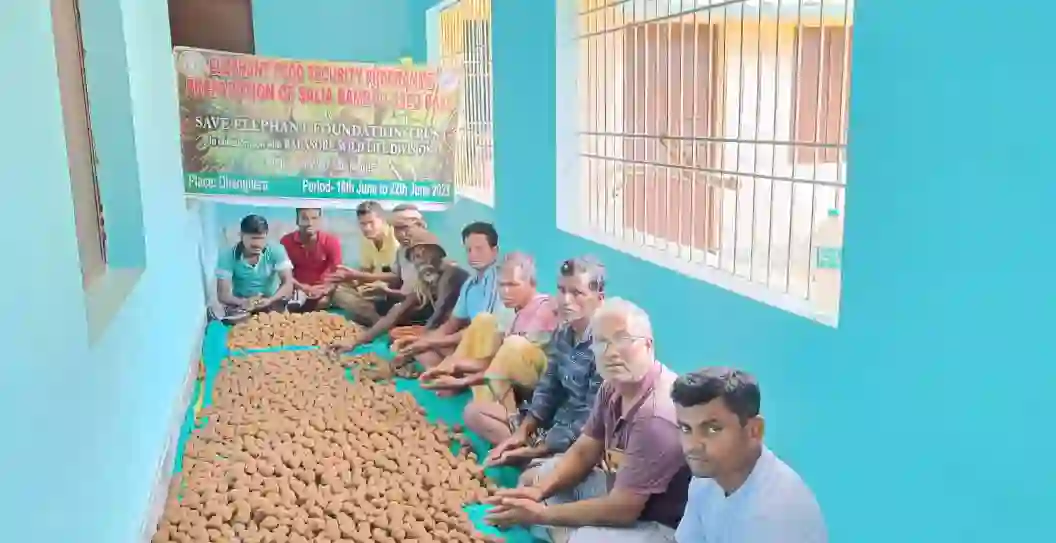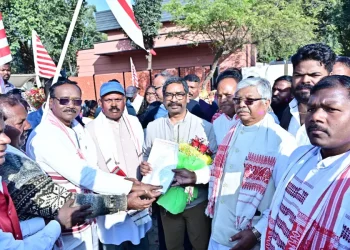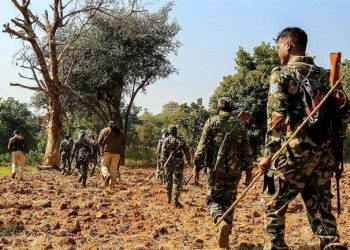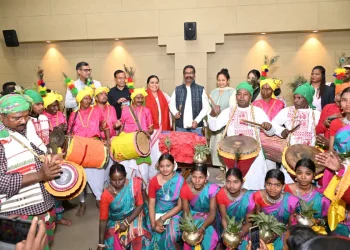Bhubaneswar
Bamboo seed balls have now kicked off a new ballgame in the human-elephant conflict in Odisha that is among the worst-affected States in India.
An exercise with the seed balls played out its second dry run in the first week of this month in Khordha and tribal and non-tribal pockets of Balasore.
In a bid to mark the weeklong 74th Van Mahotsav in July, the Bhubaneswar-based Save Elephant Foundation Trust (SEFT), an outfit mostly of former forest officials, sowed the seed balls in nearly 42.5 hectares of vacant areas in Luhapada jungle in Jaleswar block of Balasore under the ‘Elephant Security Programme-II’ (ESP) of project ‘Mission Zero Casualty’.
Similarly, ESP-II covered about 45 hectares of Bhusandapur Degraded Protected Forest (DPF) under Tangi Forest Range in Khorda District. This apart, SEFT in coordination with the forest officials of Kharagpur Forest Division of West Bengal covered nearly 40 hectares of Hatitop forest area of neighbouring State.
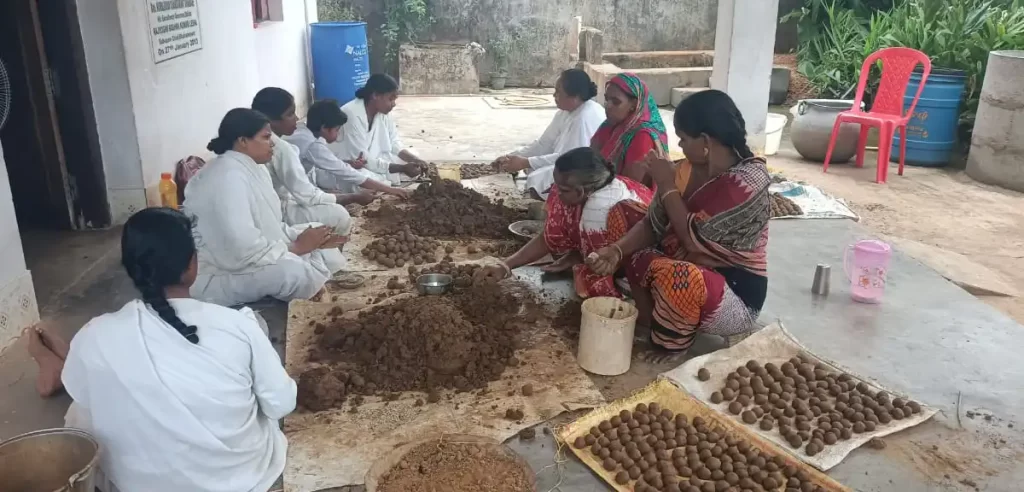
“The programme’s objective is to facilitate growth of culms in bamboo clumps for jumbos to feed on. The culms, the favourite food of giant animals, could prevent them from straying into nearby human habitations in search of food, thereby wreaking havoc on human life and properties,” Jitasatru Mohanty, an SEFT trustee and former Conservator of Forests, told The Indian Tribal.
“ESP-II is a sequel to ESP-I that was carried out in 2020 in the wild under the Athgarh Forest Division in Cuttack. This time, the venture was more organized with the involvement of our local tribal and non-tribal volunteers,” Mohanty said adding “We also roped in concerned forest officials of West Bengal and locals to replicate it in Hatitop jungle”.
“Our officials not only identified and demarcated open spaces in Bhusandapur DPF, but also rubbed shoulders with SEFT volunteers in sowing bamboo seed balls,” said P. Poornima, the Divisional Forest Officer of Khordha.
The venture could not have fructified without the cooperation of locals, who are the victims of man-elephant conflicts. Hence, SEFT held meetings with them and organized awareness programmes to motivate and mobilize them.
“We sought the cooperation of Sarpanches of Baradiha, Kalama, Khaud, Khalika, Rabania and Sardarbandha near Luhapda jungle to motivate locals,” said Ashshwini Kumar Das, the honorary wildlife warden, who threw in his lot with SEFT during ESP-II’s implementation.
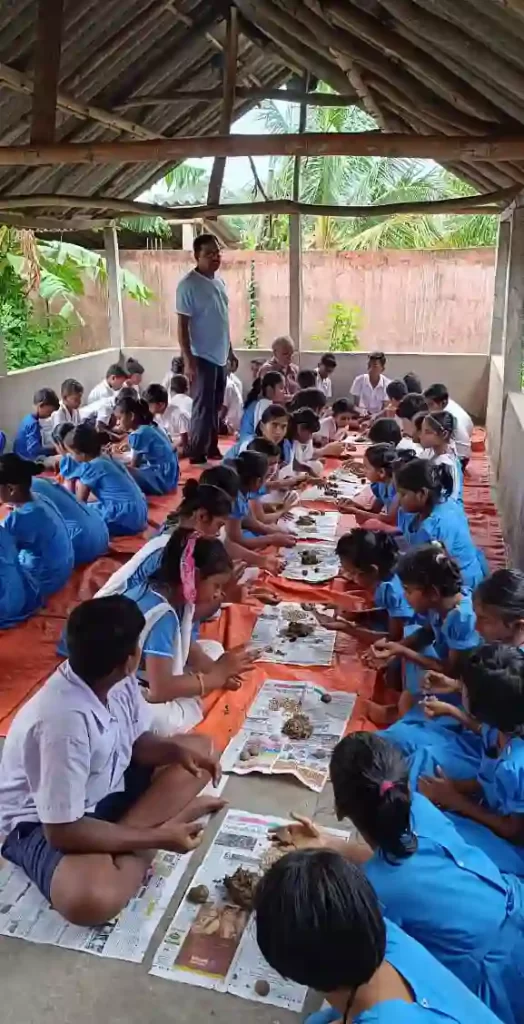
The exercise kicked off with 20 kilograms of Salia (Dendro Calamus) bamboo seeds collected from the forest areas of districts like Deogarh, Angul, Boudh and Balasore. A number of people including school children were persuaded to make balls with the mix of bamboo seeds, muddy soil, compost (khata) and pesticide (pesticide is used to prevent pests from infiltrating into the balls to destroy the seeds inside). Each ball weighed about 100 gm. Then about 100 volunteers in forest area were engaged to sow seed balls.
“We picked five to six seeds to mix them with muddy soil, compost (khata) and pesticide to make a ball,” said Satyanarayan Paramanik, a student of Gopalpur UP-ME School in Ulamari adjoining Luhapada jungle.
“We entered deep into the forest area to find open spaces for sowing the seeds,” said Mohan Marandi, a Santhal tribal of Rangomata village near Luhapada jungle. “We volunteered to take up the job, as jumbos frequently proved a menace for our villagers,” said Bharat Tudu, a Santhal of village Dhengera.
Sarpanch Subinata Dutta conceded how tough it was for her to change people’s mindset in 11 villages under her Kalama Panchayat, mostly belonging to the Santhal and Bhumija tribal community.
“Initially they refused to pave way to SEFT volunteers into Luhapada jungle. I had to hold a series of meetings with them to convince them. I not only explained to them the benefits to be reaped from the sowing of the bamboo seed balls, but also assured them that I would offset their loss, if anything went wrong. Finally, they fell in line,” the Sarpanch said.
However, the same effort has not yet proved successful in the forest areas of Rasagovindapur, Betanati and Deuli in Mayurbhanj because of the non-cooperation of locals who are mostly tribals.
“But we have not given up, as we still go on pitching awareness camps and holding meetings with locals because they can play a major role in safeguarding the germinating sprouts against the stray grazing animals,” said Ashwini.
Asked about the success rate of the ESP-II, SEFT’s another trustee Anand Kumar, former Assistant Conservator of Forest, said, “The success rate of our first venture in forest patches under Athgarh Forest Division was about 90 percent as far as sprouting of bamboo clumps are concerned. It inspired us to flag off our second phase. However, we have to wait and watch for three years for bamboo clumps to sprout this time.”
FACTOID
- A study has estimated that nearly 112 human casualties and 86 elephant deaths occurred in human-and-elephant conflicts in different areas of Odisha in 2021-22 besides 51 reported cases of permanent disabilities
- Odisha registered nearly 322 human deaths out of over 1,570 in the country during the period between 2019-20 and 2021-22











